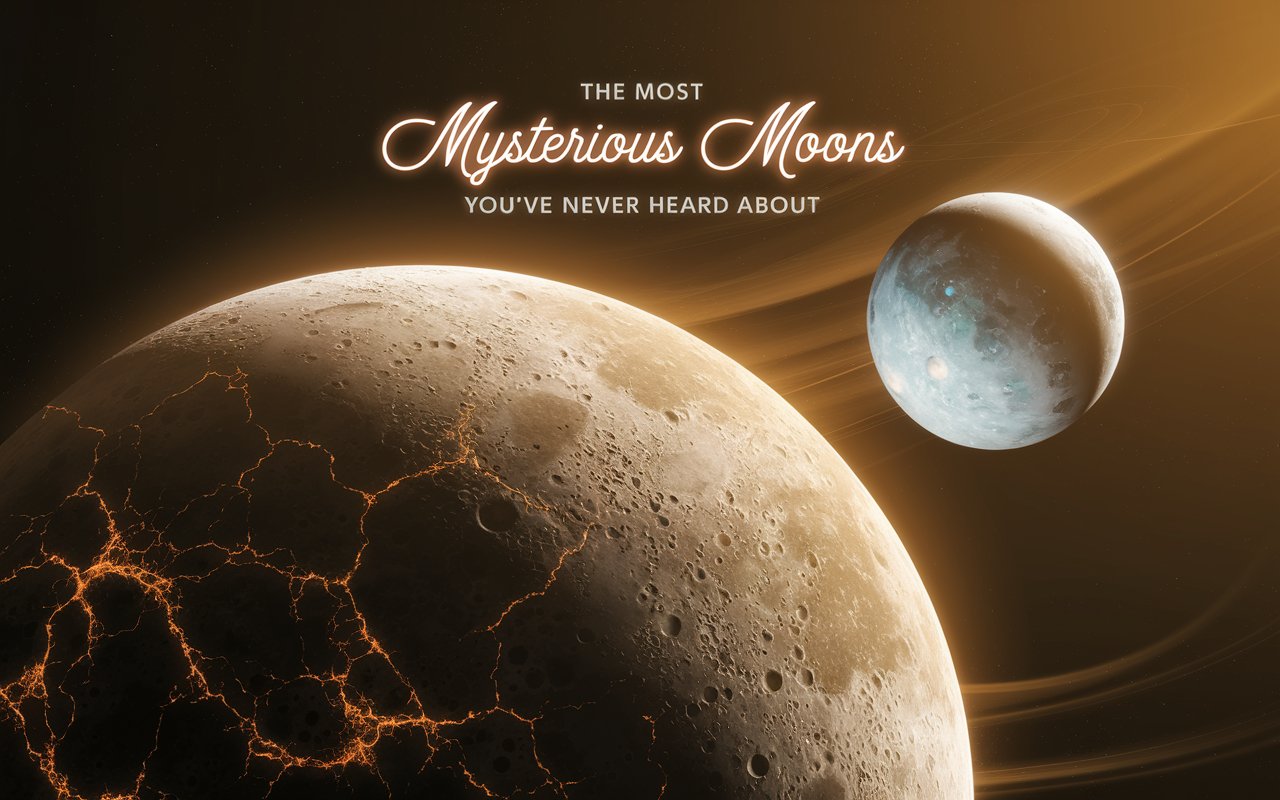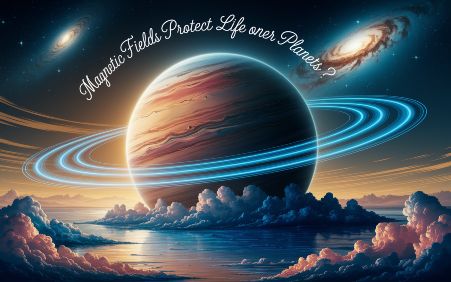Introduction
Scientists search for signs of possible ancient life in our solar system. Clues hide in planets and moons. These signs help explain how life may have started. Researchers study rocks and soil for answers. Missions explore Mars and icy moons. Findings suggest ancient life could have existed. This article explores the most promising locations. Each holds secrets from billions of years ago.
Mars and the Quest for Ancient Microbes
Mars offers strong signs of possible ancient life in our solar system. Dry riverbeds show past water flow. Clay minerals form with water present. These suggest a wet history on Mars. The planet once had lakes and maybe oceans. NASA rovers found organic molecules in Martian soil. These molecules may come from life or chemistry. Scientists look at Mars because of its history.
Curiosity Rover and Organic Compounds
Curiosity has explored Gale Crater since 2012. It discovered layered rocks made by water. These rocks contain complex organics. This supports signs of possible ancient life in our solar system. Some organics may form without life. Yet the presence of water and organics remains promising. Methane spikes detected by Curiosity spark interest. Methane may come from microbes or geology.
Europa and Hidden Ocean Clues
Europa orbits Jupiter and holds a saltwater ocean. Ice covers this vast sea. Tidal forces keep the ocean liquid. This makes Europa a key target. Scientists believe hydrothermal vents may exist on the ocean floor. On Earth these vents support life without sunlight. Europa gives signs of possible ancient life in our solar system. Plumes from Europa contain water vapor. NASA plans to study these plumes.
Why Europa Excites Scientists
Europa shows surface cracks and ridges. These features come from moving ice. Salt and other materials rise from below. Signs of possible ancient life in our solar system may hide in these features. Spectrometers detect interesting chemicals on the surface. Life could have once lived near Europa’s vents. Future missions will test this idea.
Enceladus and Active Plumes
Saturn’s moon Enceladus shoots water into space. Cassini flew through these plumes. It found hydrogen and organic molecules. These ingredients hint at hydrothermal activity. Enceladus offers strong signs of possible ancient life in our solar system. The water jets come from a subsurface ocean. Cassini revealed that the ocean has salts and organics. Scientists believe this tiny moon may host life.
Evidence From the Cassini Mission
Cassini discovered Enceladus’s ocean in 2005. It saw icy particles ejected into space. Later studies confirmed organic materials. The presence of heat and water suggests habitability. These are clear signs of possible ancient life in our solar system. A future lander may explore the surface. More missions will confirm if microbes once lived there.
Meteorites from Mars
Meteorites on Earth sometimes come from Mars. Some contain signs of possible ancient life in our solar system. ALH84001 is the most famous one. It shows tiny structures that resemble bacteria. These could be fossilized microbes. Debate continues over the origin. Some say the shapes are natural. Others believe life once existed on Mars. The carbon compounds also support ancient biological activity.
Studying Martian Rocks on Earth
Scientists analyze Martian meteorites in labs. Isotopes and structures reveal clues. Some meteorites contain magnetite. This mineral forms in bacteria on Earth. This adds to signs of possible ancient life in our solar system. More samples will arrive from Mars soon. NASA’s sample return mission will help. Better tools will examine new Martian rocks.
Ancient Venus May Have Had Oceans
Venus is hot and dry today. But it once may have had water. New models show that Venus had oceans. These may have lasted for billions of years. That boosts signs of possible ancient life in our solar system. Scientists suggest a stable climate existed. Venus’s thick atmosphere traps heat now. Long ago it may have been cooler. Life may have evolved in those oceans.
Challenges With Studying Venus
Venus’s surface is hard to explore. Thick clouds hide the ground. Extreme heat melts most probes. Still Venus shows signs of possible ancient life in our solar system. New radar maps show ancient landforms. These features suggest rivers and lakes. Future missions may drop landers. These tools may uncover buried secrets.
Ceres and Ancient Water
Ceres is a dwarf planet in the asteroid belt. It has bright spots made of salt. These suggest past briny water. NASA’s Dawn mission studied Ceres. It found signs of possible ancient life in our solar system. Cryovolcanism may have moved water to the surface. The salts may come from subsurface oceans. Organic molecules were also detected on Ceres.
Importance of Ceres in the Search
Ceres may have once held liquid water. This water could have supported microbes. Dawn’s data suggests past geological activity. These findings increase signs of possible ancient life in our solar system. Ceres is now dry and frozen. But in the past it may have been wet. Future missions may drill below the surface.
Titan and Complex Chemistry
Titan has lakes and rivers of liquid methane. It has a thick atmosphere rich in organics. Titan offers signs of possible ancient life in our solar system. Though cold and far from the Sun its chemistry excites scientists. Methane may support exotic life. Organic haze fills Titan’s skies. The Dragonfly mission will study its surface in detail.
A Unique Moon With Potential
Titan’s conditions are very different from Earth. Still signs of possible ancient life in our solar system remain possible. Liquid methane may replace water for life. Complex molecules form in Titan’s atmosphere. Dragonfly will test this chemistry. It may find signs that life once existed. This moon holds many mysteries.
Pros and Cons of Studying Ancient Life in the Solar System
| Pros | Cons |
|---|---|
| Helps us understand life’s origins | Missions are expensive and complex |
| Informs the search for life beyond Earth | Harsh environments limit exploration |
| Reveals how planets and moons evolve | Data may be hard to interpret |
| Supports future colonization goals | Contamination risk from Earth life |
| Expands our knowledge of biology | Some signs may have non-biological causes |
How We Search for Signs of Life
Rovers land on planets and drill rocks. Orbiters map surfaces and detect organics. These tools find signs of possible ancient life in our solar system. Spectrometers analyze light from planets and moons. They reveal chemical fingerprints. Robots collect samples and test soil. Engineers design them to survive harsh conditions. These missions send data back to Earth for review.
Technologies That Help the Search
Advanced cameras capture fine details. Lasers scan surfaces for organics. Robots climb cliffs and drill below ground. These tools find signs of possible ancient life in our solar system. Spacecraft like Perseverance include labs on wheels. They test soil and rocks for microbes. Future missions will carry more advanced tools. These technologies evolve quickly.
How Scientists Confirm Biological Evidence
Not all organics mean life. Some form from non-living processes. Scientists look for patterns that suggest biology. These include carbon ratios and cell-like shapes. These details confirm signs of possible ancient life in our solar system. Researchers compare data to Earth microbes. They also simulate other planets in labs. This helps rule out false positives.
Role of Private Companies
Companies now help explore space. They build spacecraft and tools. This boosts the search for signs of possible ancient life in our solar system. Collaboration with NASA and ESA expands missions. Firms like SpaceX lower launch costs. This helps send more probes. Private research also improves lab testing. The combined effort speeds up discovery.
Future Missions to Watch
NASA’s Mars Sample Return will bring Martian rocks to Earth. Europa Clipper launches soon. Dragonfly will explore Titan. Each mission looks for signs of possible ancient life in our solar system. Other missions will follow. Plans for Venus include surface landers. Ceres and Enceladus also interest researchers. These missions may solve big mysteries.
Global Collaboration in Life Search
Many nations take part in the search. The European Space Agency works with NASA. Japan explores asteroids. China sends probes to the Moon and Mars. Together they study signs of possible ancient life in our solar system. Data is shared between labs. Joint missions combine funding and talent. This global effort brings faster results.
Why This Search Matters
Finding ancient life changes science. It proves we are not alone. Signs of possible ancient life in our solar system show life is common. These findings shape space policy and exploration. They help us understand biology’s role in the universe. They may lead to new medicine or energy. They inspire future generations to explore space.
Conclusion
The search for signs of possible ancient life in our solar system continues. Mars offers many clues. Moons like Europa and Enceladus hold promise. Even distant worlds like Titan and Ceres show signs. Technology improves each year. Missions find new evidence with every landing. This journey may soon answer life’s biggest question.
FAQs
1. What planet shows the most signs of ancient life?
Mars shows the strongest signs of possible ancient life in our solar system due to its past water.
2. Can moons have supported ancient life?
Yes some moons like Europa and Enceladus show signs of possible ancient life in our solar system.
3. Are organics proof of life?
Not always. They are signs of possible ancient life in our solar system but can form naturally too.
4. What is the next mission to search for life?
The Mars Sample Return and Europa Clipper will study signs of possible ancient life in our solar system.
5. Can we find fossils on other planets?
It is possible. Fossil-like shapes support signs of possible ancient life in our solar system.





